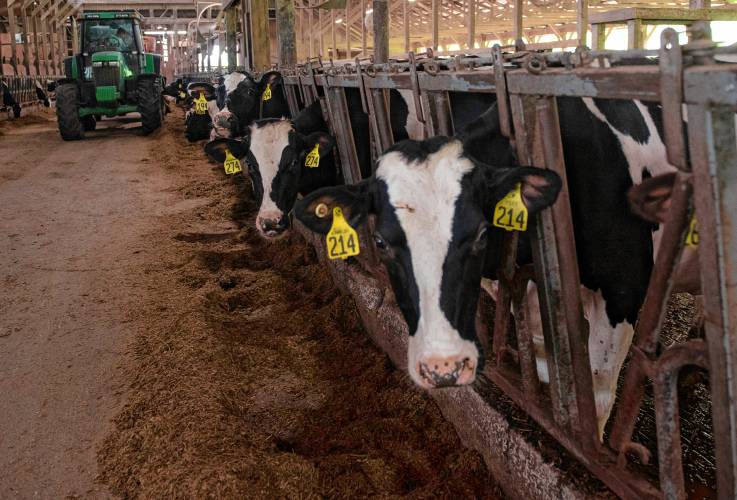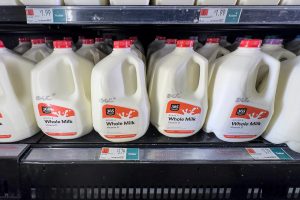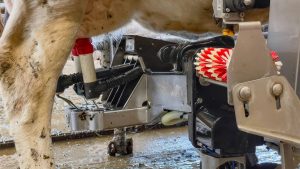
Cut on Saturday, hay in a field at Barstow’s Longview Farm remains on the ground, where if the weather stays dry for 48 hours, it will be picked up and put into the farm’s bunker silo.
After harvesting it at its peak nutritional value for the dairy cows, and before the hay goes to seed, hope remains for favorable conditions for getting the feed put away, even following Sunday’s downpours.
“We have a sense it’s going to be OK, just not the best,” says Denise Barstow Manz, a manager at the farm and its store who is part of the farm’s seventh generation.
Before the hay is fed to the dairy cows, a dairy nutritionist will test its quality and examine its nutritional value, Barstow Manz said.
Like other farms, those that depend on growing and harvesting sufficient feed for their animals are being challenged by the current weather.
At McCray’s in South Hadley, owner Steve McCray noted that the best conditions for taking in hay are after three straight days of sun, which as of Monday last occurred about 10 days earlier.
“It’s a problem because the fields are all wet,” McCray said. “To make hay, you need three or four days of sun.”
As flooding has wreaked havoc on crops, most in proximity to rivers, the amount of rain is beginning to also take a toll on the hayfields, even though in May and June the region had stretches of sunny and dry weather, ideal for cutting and baling.
“Since then it’s been brutal,” McCray said.
Besides conventional hay bales, farms can also do haylage, though farmers are also having problems with this form of feed, which can potentially rot as the pile grows larger. To make the haylage, the already-cut hay grass is run through a chopper the same day it is mowed and covered with plastic so it can ferment.
But the fields can’t be let go too long without cutting. McCray said if allowed to grow for six to seven weeks, that will result in a lower quality than the ideal five- to six-week growing period.
The farms are not unaccustomed to dealing with such challenges to their hay supplies, and they have reached out to others in the past, such as farms in Vermont. The problem this year is that the weather is affecting farms throughout the wider region.
“I don’t know where the good weather is around here,” McCray said.
Bruce Jenks, who runs Maple Valley Creamery in Hadley, wrote a letter to the state’s Agriculture Commissioner Ashley Randle appealing for possible assistance.
“We’ve spoken with numerous farmers who’ve lost acres and acres of corn and feed,” Jenks wrote.
He attached a photograph showing the empty loft of the barn that in a normal season would already be with 2,000 to 3,000 bales of hay that would become the winter feed.
As at Barstow’s, Jenks noted that the first cut hay is still in the fields, and the frequency of the rain and standing water in the fields is deterring more harvesting.
“Due to the threat of rain the one field we did put up had to be in round bales,” he wrote.
Three years ago, in the midst of the COVID-19 pandemic, Barstow’s was able to go to other farms, Barstow Manz said, including ones that had downsized their herds and had hay to spare, so long as they harvested the hay themselves.
Farms can also turn to other commodities, forage and other grains, such as corn silage, corn meal and whey. In some cases, though, making these purchases is more expensive and means spending money out of state, rather than keeping it local.
Even should things turn drier this week, the humidity and high temperatures are also affecting the hay. “Heat on top of the wet is tough,” Barstow Manz said.
One saving grace is that it’s still early. McCray said he would have more concerns if it were already September, although circumstances are difficult right now.
“The whole thing is painful,” McCray said.

























